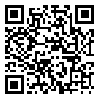Volume 4, Issue 2 (6-2020)
EBHPME 2020, 4(2): 112-126 |
Back to browse issues page
Download citation:
BibTeX | RIS | EndNote | Medlars | ProCite | Reference Manager | RefWorks
Send citation to:



BibTeX | RIS | EndNote | Medlars | ProCite | Reference Manager | RefWorks
Send citation to:
Mehrolhassani M H, Haghdoost A A, Dehnavieh R, Esmaeili M, Yazdi-Feyzabadi V. A Qualitative Exploration on Major Challenges of Reproductive Health in Adolescents and Youth in Iran. EBHPME 2020; 4 (2) :112-126
URL: http://jebhpme.ssu.ac.ir/article-1-265-en.html
URL: http://jebhpme.ssu.ac.ir/article-1-265-en.html
Mohammad Hossein Mehrolhassani 

 , Ali Akbar Haghdoost
, Ali Akbar Haghdoost 

 , Reza Dehnavieh
, Reza Dehnavieh 

 , Maryam Esmaeili
, Maryam Esmaeili 

 , Vahid Yazdi-Feyzabadi *
, Vahid Yazdi-Feyzabadi * 




 , Ali Akbar Haghdoost
, Ali Akbar Haghdoost 

 , Reza Dehnavieh
, Reza Dehnavieh 

 , Maryam Esmaeili
, Maryam Esmaeili 

 , Vahid Yazdi-Feyzabadi *
, Vahid Yazdi-Feyzabadi * 


Social Determinants of Health Research Center, Institute for Futures Studies in Health, Kerman University of Medical Sciences, Kerman, Iran , v_yazdi@kmu.ac.ir
Abstract: (2681 Views)
Background: Reproductive health (RH) in adolescents and youth, as one of the critical components of population health policies, plays a pivotal role in preventing risky behaviors and achieving a healthy and productive generation for the future society. Thus, this study aimed to explore the challenges of RH in adolescents and youth in Iran.
Methods: Using a purposeful sampling method with maximum variation, semi-structured in-depth interviews were held with eighteen key informants in the field of RH. A Snowball sampling strategy was deployed to identify the participants. The multi-dimensional PRECEDE-PROCEED model of health promotion was used as a guiding framework for the topic guide. The transcribed interviews were coded and analyzed using thematic analysis.
Results: Three main themes of decision-making system, lifestyle, as well as social and epidemiological issues, were emerged from the interviews. We also explored six themes, including the knowledge and expertise about RH, policy-making and management system, environmental factors, individual factors, family and social anomalies, and epidemiological status of RH. Furthermore, twenty-five sub-themes were extracted from the main themes, which represented the challenges. Lack of understanding of the issues and absence of a coherent intellectual system that provides a collaboration of different systems in policy-making were fundamental and dominant challenges of RH for adolescents and youth in Iran.
Conclusion: To meet these challenges, we require an integrated and coherent system of policy-making with a reliance on scanning individual, environmental, social, and epidemiological changes that influence RH.
Methods: Using a purposeful sampling method with maximum variation, semi-structured in-depth interviews were held with eighteen key informants in the field of RH. A Snowball sampling strategy was deployed to identify the participants. The multi-dimensional PRECEDE-PROCEED model of health promotion was used as a guiding framework for the topic guide. The transcribed interviews were coded and analyzed using thematic analysis.
Results: Three main themes of decision-making system, lifestyle, as well as social and epidemiological issues, were emerged from the interviews. We also explored six themes, including the knowledge and expertise about RH, policy-making and management system, environmental factors, individual factors, family and social anomalies, and epidemiological status of RH. Furthermore, twenty-five sub-themes were extracted from the main themes, which represented the challenges. Lack of understanding of the issues and absence of a coherent intellectual system that provides a collaboration of different systems in policy-making were fundamental and dominant challenges of RH for adolescents and youth in Iran.
Conclusion: To meet these challenges, we require an integrated and coherent system of policy-making with a reliance on scanning individual, environmental, social, and epidemiological changes that influence RH.
Type of Study: Original article |
Subject:
Special
Received: 2019/12/8 | Accepted: 2020/07/4 | Published: 2020/07/4
Received: 2019/12/8 | Accepted: 2020/07/4 | Published: 2020/07/4
Send email to the article author
| Rights and permissions | |
 |
This work is licensed under a Creative Commons Attribution-NonCommercial 4.0 International License. |




